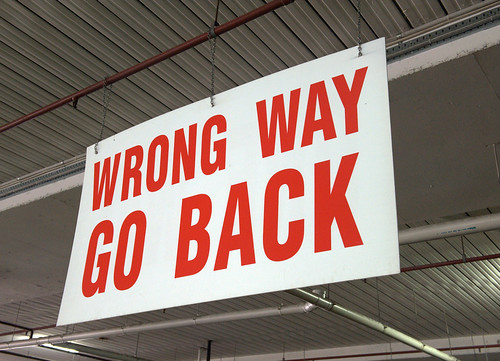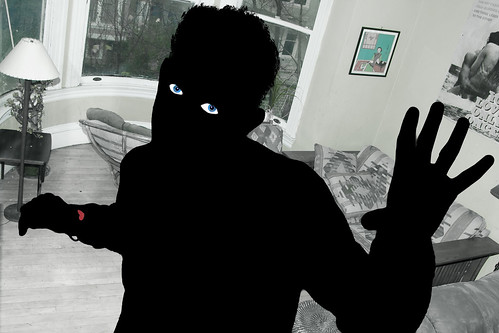Stock images remain a fairly controversial issue in the world of design. There are some who believe that it is lazy to use someone else’s work, even if it is bought fairly. Maybe that is true; certainly, it is the easy way to generate images for a core design.
But there are many reasons that we choose to go with stock photos rather than creating our own. The obvious one is the time and effort that are saved, which can then be put toward the design process itself. This can help to improve your finished product more than if you took the step of taking your own photos, which can be an exhaustive and time-consuming process.
If you do choose to use stock, you should always go with the highest quality images you can find. Anything else looks cheap and badly created, and you won’t want to present that as the result of your hard work. Especially since a low quality stock image can take what was a brilliant design and ruin the effect.
Here are seven tips on how to avoid using stock images the wrong way, and so corrupting the integrity of your design:
1. Know When Using Stock Is Appropriate
Guess what? Using stock images are not always the way to go. The trick is knowing when it would be better to use someone else’s work, or when it would be better to create your own.
The fact is, you won’t always be able to find that “perfect” image to illustrate your point. Rather than rely on someone else’s vision, you should occasionally bring your own to life. This is what many designers do, and they find it very beneficial. It also makes their clients happy, as they are getting a totally original product.
You might want to take the time occasionally to take a bunch of stock photos that relate to your common niches, or general images that can be used for multiple topics. Then keep them in a folder for when you need them.
2. Avoid Cliche’s Like The Plague
The worse thing you can do is go for an overused concept in a stock image. For example, if you were designing a wedding site and needed an image for a page dedicated to marriage jitters, you won’t want a picture of a runaway bride. It is overdone, cliché and cheesy.
Keep your eyes out for new and creative ways to get the same point across. Looking at other websites might help spark some inspiration and get those mental juices flowing. You want an original representation, not a generic one.
3. Invest In A Good Quality Image
Any good stock site will have different size and resolution options for you to choose from on any particular image. The lower the res, the cheaper the picture. This can be tempting, especially when you need to use multiple stock images one one website. It can get expensive, and they might not fully reimburse for content used in the design creation.
But your reputation and portfolio mean more than losing a couple of bucks on a project. If you use low quality images, your final product will reflect that. You will end up shooting yourself in the foot, no matter how good the rest of the site may be. It will just look shoddy.
Use the high quality images, or at least something far into the middle range. You want to put your best face forward. If the client insists on you using low quality stock, point out the problems that may arise with this tactic. If they still insist, there may be nothing you can do, but you still tried.
4. Don’t Over-Clone
Say you have an image that is perfect, but it just isn’t long enough to cover the necessary space. Design 101 would state that you just have to extend the photo using the same image, by cloning the original to make a second part, right? That is why Photoshop has such a handy little clone tool right there on the dashboard for you to use, after all.
The problem here is not with cloning, but with bad cloning that is overdone. A direct replica of the image set side by side, no matter how well blended into a single image, is easy to spot. The same pixels are used over and over again, and soon you have a highly recognizable pattern. It is obvious and unprofessional.
Feel free to clone, but vary the placement of point with the image. Always make sure you have manipulated it to a point that people would have to really study it to see. Try asking someone else to take a quick look, and see if they can spot the difference.
5. Never Let Bad Masking Slide
You can always rely on a clean, white background to provide you with the perfect spot for any image. It is the number one choice for designers everywhere, and a big reason that much object-focused stock photography is done the same way. It makes like a lot easier for the one making the site.
But being easy for you doesn’t equate to being preferred by the customer. There is a good chance you will have clients who insist on using gradient backgrounds and photos that were shot with busier backgrounds.
This isn’t a disaster, but it does make it harder to make it all come together as seamlessly as a standard white-backed design. Which is why you should avoid the pitfall of using basic Photoshop masking. The end result will not look professional, and it can be spotted as a bad job by anyone with the slightest bit of design experience.
Instead, learn some advanced tools and methods, and really utilize the refine edge tool.
6. Make Sure Your Photo Is Related And Never Random
I hate it when clients give me stock photos to use. I have never worked on a project like this where I was given what I actually need. Instead, they expect me to make a miracle using unrelated and random, often low quality, photos. Which reflects badly on my work to anyone who sees it.
Photos are not window dressing. They are there to help reinforce the point of your website, and so you need images that reflect the messages. Where would a high-res photo of a ladybug fit on a site for a financial consulting company? How could you fit a wheat field into a web page for a telecommunications business?
Keep focused, and make sure your client knows the limitations of a general stock photo.
7. Make Sure Your Stock Image Is Up-To-Date
I saw a website the other day for a teenage support group that had pictures of laughing, happy teens dressed in a way that would have looked at home in an old episode of Blossom. Right down to the garish, multi-colored outfit and floppy, flower topped hats. It was like stepping back into the early 90’s, and it looked ridiculously out of place for a modern day website.
A lot of stock photos have been recycled from days prior to their inclusion on the Internet. They are usually affordable and pretty high resolution, which makes them tempting for some designers.
But using something that is out of date is counter-productive. It distracts the attention of the site visitor and looks old. That is the last thing you want.
Conclusion
There is nothing wrong with using stock images in your design. It is a great way to cut down on the time you spend on those details, giving you more time to work on the rest of the site. It is also a necessity if you aren’t that good with a camera yourself.
But there is a right and a wrong way to go about it. Make sure you are doing it the right way, and you will be covered.
Annie is a creative blogger on finance and marketing topics.







